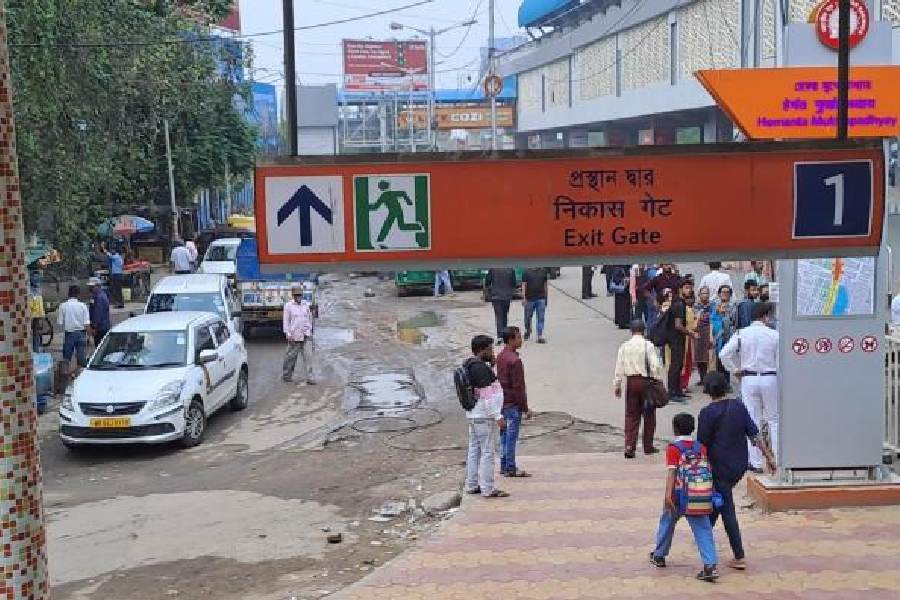Crossing roads remains a challenge for pedestrians at the Ruby intersection, which has witnessed a rise in pedestrian footfall since the start of commercial services on the New Garia-Ruby stretch of the New Garia-airport Metro corridor on March 15.
Passengers going to board a train or after getting off one at the Ruby Metro station (Hemanta Mukhopadhyay) need to cross one or more roads at the crossing.
Police have introduced a few changes for the safety and convenience of the pedestrians, such as pushing a bus stop further north and creating a pedestrian pathway on a stretch.
But that does not seem to be enough, said commuters.
The morning rush hour on Friday witnessed a significant footfall at Hemanta Mukhopadhyay station. Many passengers who got off at the station were headed to private hospitals in the vicinity or towards Gariahat or further north towards the airport.
“Officers and constables are stationed near an exit of the Metro station at the Ruby intersection to direct pedestrians and passengers further north, along a flank of EM Bypass,” a senior police officer said.
“The bus stop at the Ruby crossing has been pushed further north, near Parivahan Bhavan. The cops on duty have been told to direct pedestrians along a channel towards the new location of the bus stop.”
A narrow channel with a steel railing on one side has been created near an exit of the Metro station. Anyone trying to walk down the carriageway is being directed to use the channel.
These arrangements, though, are only at one point of the intersection — among the busiest crossings along
the Bypass. At other points, the situation is the same as before.
Those getting off at the Parivahan Bhavan side of the Metro station at the Ruby crossing walked up to the Vivanta hotel for their onward journey towards Gariahat.
Many pedestrians walked across the Bypass to reach the other end, often braving moving vehicles.
“We usually cross the road to reach the bus stop at Ruby for a bus to Ultadanga,” said Mohammad Noor, who works at a small-scale unit at the Kasba Industrial estate.
Asked about the option of taking the station’s pedestrian subway to cross the road, Noor and his friends smiled. “To reach the pedestrian pathway, one has to take an elevator, then walk down the pathway and come down a flight of steps to reach the other side. Crossing over at one go is much easier,” said one of the friends who did not want to be named.
The station’s outlets on either side of the Bypass at the Ruby crossing open onto roads that aren’t smooth to walk on. On the side of the Parivahan Bhavan, the service road remains partly dug up with a long row of cars queued up to fill up LPG at a station. The service road on the other side has several obstacles, too.
“We have put up signage inside the station and along the pedestrian pathway to help passengers understand which way to walk. We will meet the police and others if there is an urgent need for any other signage,” a senior officer of the Kolkata Metro Rail Corporation (KMRC), the implementing agency of the East-West Metro.
The police said they would wait for some time to understand the rise in the volume of pedestrian footfall and arrive at an estimate once the run time is lowered from the existing gap of 20 minutes.
“We will have to deploy more personnel, including home guards and constables. Most traffic guards are short of staff and we will have to see what can be done to manage this rise in pedestrian count,” the police officer said.
